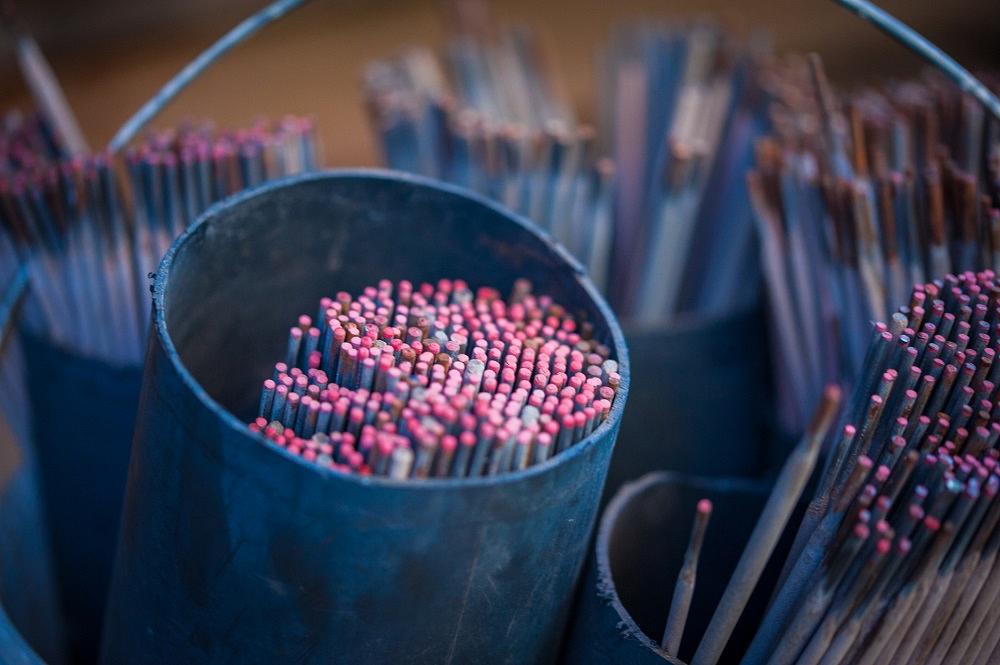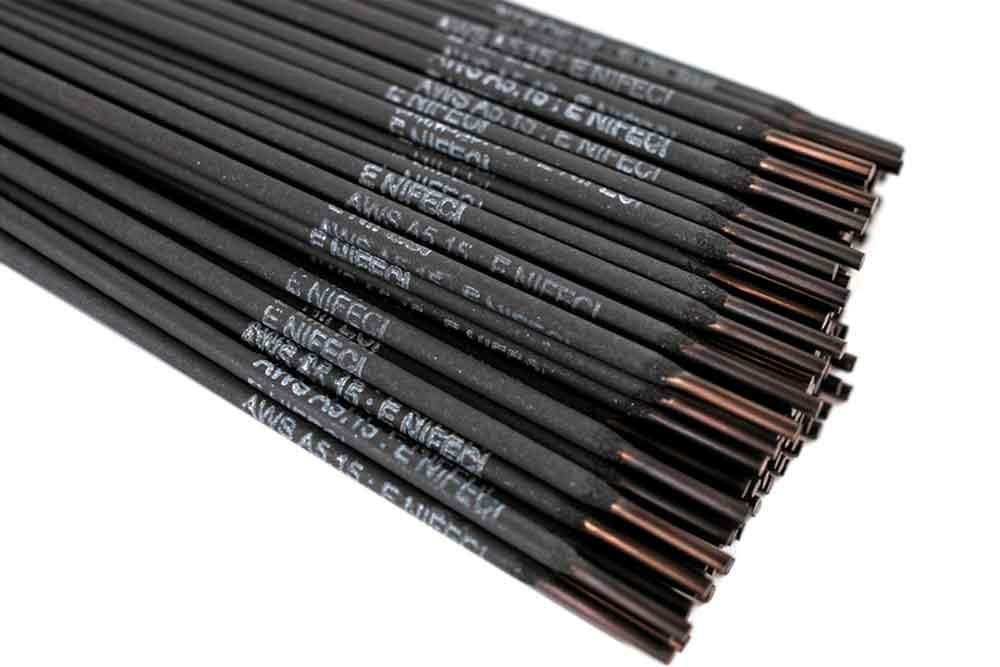Filler Metals, Process and Application Specialist
- FMA
- The Fabricator
- FABTECH
- Canadian Metalworking
Categories
- Additive Manufacturing
- Aluminum Welding
- Arc Welding
- Assembly and Joining
- Automation and Robotics
- Bending and Forming
- Consumables
- Cutting and Weld Prep
- Electric Vehicles
- En Español
- Finishing
- Hydroforming
- Laser Cutting
- Laser Welding
- Machining
- Manufacturing Software
- Materials Handling
- Metals/Materials
- Oxyfuel Cutting
- Plasma Cutting
- Power Tools
- Punching and Other Holemaking
- Roll Forming
- Safety
- Sawing
- Shearing
- Shop Management
- Testing and Measuring
- Tube and Pipe Fabrication
- Tube and Pipe Production
- Waterjet Cutting
Industry Directory
Webcasts
Podcasts
FAB 40
Advertise
Subscribe
Account Login
Search
Storing SMAW electrodes
Electrode sticks that are well cared for lead to quality welds
- By Michael Maxon
- January 24, 2020
- Article
- Consumables

Welders can follow these simple recommendations for storing, redrying, and handling SMAW electrodes to help reduce moisture exposure and ensure quality, shelf life, and performance. Getty Images
As important as electrodes are to shielded metal arc welding (SMAW), the process of storing them properly often is not top of mind. However, properly storing SMAW electrodes is integral to the quality of the weld and the successful outcome of a welding project or job.
For SMAW electrodes to perform adequately, you must keep them dry and in low-humidity conditions. When electrodes absorb moisture from the atmosphere, they must be dried in order to restore the ability to deposit quality welds. Electrodes that have absorbed too much moisture may lead to weld cracking or porosity.
If you are experiencing unexplained weld cracking problems, or if the electrode arc performance is deteriorating, you may need to re-examine your storage methods.
Storing Low-hydrogen Electrodes
Low-hydrogen electrodes have more stringent and precise storage requirements than others. Take 7018 series electrodes, for instance. These welding rods are commonly used where critical code and X-ray-quality weld requirements are observed, such as in shipyard, pipeline, and petrochemical applications. They have low-hydrogen blocks and will deteriorate if they are exposed to the atmosphere for more than eight or nine hours. These electrodes pick up molecules of hydrogen from the atmosphere that can cause poor weld performance, such as flux cracking and weld cracking.
Your low-hydrogen electrode may be damaged if you begin to notice porosity and spatter on the first few inches of the weld. The porosity can even be internal and not visible externally on the weld. As the rod begins to heat up, the weld will improve and appear smoother—but by then the weld may already have been compromised.
To combat damage or moisture pickup, be sure to store these electrodes in a welding rod oven at 250 degrees F. Welding rod ovens, also known as electrode stabilization ovens and electrode holding ovens, help ensure high-quality welds by preventing electrodes from absorbing moisture from the atmosphere. These ovens range in size from 5 gallons that can be easily transported to a job site to as large as a commercial stove.
Do not cut corners with this. Many years ago welders thought it was OK to store electrodes in an old refrigerator with a lightbulb turned on. This is not the case. For integrity of the electrode, make sure to store them at 250 degrees F.
Many welders will switch out their electrodes while on the job site for welding code applications to ensure that they haven’t been exposed to the atmosphere for too long. If you’re using 8018 and 9018 electrode series, switch them out every three to four hours to maintain their integrity. And 10018 series should be switched out even more frequently—every two to three hours—to prevent porosity and weld cracking from occurring.
If you have electrodes that may have been exposed to atmospheric and moisture conditions, place them in the rod oven at 400 to 500 degrees F to dry out and reconstitute. You should not redry electrodes more than twice.
Electrodes that are not low-hydrogen have storage requirements as well. All of the 60 series and some of the 70 series (7014 and 7024) should be stored as airtight as possible to avoid contamination from smoke, moisture, and other atmospheric airborne pollutants. Keep in mind that some of the 60 series electrodes actually benefit from a small amount of moisture right before use. For example, 6910 and 6011 have a cellulose flux that requires a little moisture or mild humidity to keep the flux pliable, otherwise the flux becomes brittle.

To ensure SMAW electrodes perform adequately, you must take proper care to store them in dry, low-humidity conditions. Electrodes that absorb moisture from the atmosphere must be dried to restore their ability to deposit quality welds.
Steps to Protect Your Electrodes From the Atmosphere
Here are a few steps you can take to protect SMAW electrodes from atmospheric contamination.
Consider moisture-resistant electrodes. Some manufacturers offer a classification of moisture-resistant electrodes. While slightly more expensive, these electrodes are manufactured with an H4R coating that is resilient to moisture and contains only 4 ml of hydrogen for every 100 grams of weld (approximately 3½ ounces). The moisture-resistant coating prevents the electrode from taking on more moisture and protects the integrity of the weld, especially on critical projects where a true low-hydrogen electrode is needed.
Don’t overlook the packaging. For extra protection, consider purchasing your electrodes in vacuum-seal packaging, which shields electrodes from the environment and provides a longer shelf life. You do not have to worry about the electrode degradation or concern yourself with storage until you open the package.
Another way manufacturers make using and storing electrodes easier is to package them in smaller, individual packages. For an example, instead of offering a 50-lb. container of electrodes that will be exposed to the atmosphere upon opening, some manufacturers offer four 10-lb., vacuum-sealed tubes packaged in a container that can be used as needed.
Many manufacturers simply package their electrodes in cans or cardboard boxes with an air seal, which results in a shorter shelf life than packaging with a vacuum seal.
Depending on the type of welding rod and the storing conditions, some electrodes can go bad in a matter of six months, while others may last for several years. While stick electrodes do not carry an expiration date, as a rule, you shouldn’t keep them for more than a year.
Purchase electrodes in small batches. Buy the smallest quantity of electrodes that you need. If you don’t anticipate using large quantities, buy a 5- or 10-lb. can, rather than a 50-lb. container. You might be tempted to buy the larger quantity to obtain a small discount, but it’s better to buy the smallest quantity that makes sense. Don’t be penny-wise and pound foolish, as the saying goes.
Use a rod guard. You may find it beneficial to store your SMAW electrodes in rod guards—plastic, round tubes with a rubber gasket seal—which are available from welding supply stores. They are airtight, providing for longer shelf life, and you can open or close them as much as you need to.
Be sure to contact the manufacturer with any specific questions regarding your SMAW electrodes.
Michael Maxon is filler metals, process and application specialist at Weldcote, 7720 Lehigh Ave., Niles, IL 60714, 888-258-0121, mmaxon@weldcotemetals.com, weldcotemetals.com.
About the Author
About the Publication
subscribe now

The Welder, formerly known as Practical Welding Today, is a showcase of the real people who make the products we use and work with every day. This magazine has served the welding community in North America well for more than 20 years.
start your free subscription- Stay connected from anywhere

Easily access valuable industry resources now with full access to the digital edition of The Fabricator.

Easily access valuable industry resources now with full access to the digital edition of The Welder.

Easily access valuable industry resources now with full access to the digital edition of The Tube and Pipe Journal.
- Podcasting
- Podcast:
- The Fabricator Podcast
- Published:
- 04/16/2024
- Running Time:
- 63:29
In this episode of The Fabricator Podcast, Caleb Chamberlain, co-founder and CEO of OSH Cut, discusses his company’s...
- Trending Articles
Sheffield Forgemasters makes global leap in welding technology

ESAB unveils Texas facility renovation

Engine-driven welding machines include integrated air compressors

The impact of sine and square waves in aluminum AC welding, Part I

Compact weld camera monitors TIG, plasma processes

- Industry Events
16th Annual Safety Conference
- April 30 - May 1, 2024
- Elgin,
Pipe and Tube Conference
- May 21 - 22, 2024
- Omaha, NE
World-Class Roll Forming Workshop
- June 5 - 6, 2024
- Louisville, KY
Advanced Laser Application Workshop
- June 25 - 27, 2024
- Novi, MI



























